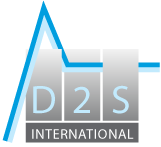CITYHUSH
Acoustically Green Road Vehicles and City Areas
Acronym: CITYHUSH
Contract: SCP8-ga-2009-233655
Full title: Acoustically Green Road Vehicles and City Areas
Starting date: January 1, 2010
Project Co-ordinator: Acoustic Control
Website: www.cityhush.org
Duration (in months): 36
Budget: € 5,149,510.00
EC contribution: € 3,499,850.00
Background
The large and medium sized European cities (> 100 000 inhabitants) will, according to the EC Noise Directive 2002/49, have to produce and deliver noise maps and noise action plans at year 2012 and 2013 respectively. At these dates, the cities with > 250 000 inhabitants shall also supply to the Commission their revised noise maps and Actions Plans.
The identified hot spots and noise acting plans made with the existing technology suffer from major shortcomings:
- the correlation between hot spots with annoyance and complaints is very poor;
- proposed mitigation measures are in general resulting in increased emissions;
- only indoor noise comfort is addressed whilst a silent outdoor environment is also very important especially in cities where people live, work and recreate outdoors during many hours per day.
The CITYHUSH project will support city administrations in the production and implementation of these noise action plans as well as of the noise reduction technology that will be the framework in these Noise Action Plans.
Objectives
The CITYHUSH project has as objectives:
- to reduce the overall noise levels in the treated city zones by 10-20 dB(A);
- to substantially reduce the CO2 emissions;
- to reduce other emissions to near zero at least in certain cases.
The project mainly aims at reducing noise in the city environment, it deals with developing suitable problem identification and evaluation tools (noise score models) and with designing and developing solutions, to be integrated in city action plans, for problems which are identified as hot spots but which show also high correlation with annoyance and complaints. The developed solutions will be validated in a city environment. All solutions will target a combined reduction of all emissions (noise, CO2 and fine particles).
Description of Work
Step change solutions (such as Q-Zones) are proposed within the CITYHUSH project in order to meet the challenging combined noise and CO2 reduction criteria.
The noise score models for dwellings will be improved to increase correlation between hot spots and annoyance (e.g. by including effects of low frequency noise) and to increase correlation between hot spots and complaint (e.g. by including maximum levels to account for specific sources such as motorcycles).
A noise score model for outdoor noise will be developed to be able to evaluate the beneficial aspects of the creation of parks and other calm areas.
Practically this means that besides the work packages Dissemination and Management there are 5 technical work packages:
WP1 identifies the boundary conditions required to obtain Q-Zones as well as the maximum noise gains for parks embedded in Q-Zones.
WP2 develops a noise score rating model for exterior noise, improves the noise score rating model for indoors, and gathers cost / benefit information on the Q-Zones.
WP3 is the main work package on noise reduction and covers:
- an objective and psychoacoustic evaluation of the emitted noise from hybrid electric vehicles and the development of an associated noise synthesis tool for simulation;
- the development of functional noise specifications for purchasing hybrid electric vehicles which are acceptable all over Europe, and noise criteria for vehicles that are allowed free access to the Q-Zones;
- the development of a low noise road surface for the quiet vehicles;
- the development of quiet tyres for these quiet road surfaces;
- the definition of an annoyance standard for motor cycles in the urban environment.
WP4 addresses the propagation and transmission of traffic noise and will produce recommendations for optimal tyre dimensions for quiet tyres for heavy vehicle, study tyre hoods for passenger cars, and design solutions to reduce low frequency airborne noise and low frequency structure borne noise.
WP5 will validate the Q-Zone concept, the embedded park concept, the noise score rating model for the Q-Zones and embedded parks, the noise reduction of the vehicles and the solutions for low frequency air borne noise and low frequency structure borne noise.
Results
Following innovative solutions and tools will be developed:
- Concept of Q-Zones (zones in inner where only quiet low emission vehicles are tolerated) and where the noise levels will be reduced by more than 20 dB in comparison with the existing situation.
- Concept of parks embedded in Q-Zones where the noise levels will be reduced by more than 25 dB in comparison with the existing situation.
- Noise score rating models for indoors which correlate better with annoyance and noise complaints by integrating low frequency noise and the occurrence of high noise single event (e.g. passing motorcycles) into the analysis.
- Noise score rating models for the outdoors in order to be able to assess the complete living and working environment.
- Objective and psychoacoustic evaluation tool for low-noise/low-emission vehicles.
- Mathematical synthesis tool for noise from low-noise/low-emission vehicles to be used in simulation studies.
- General performance noise specifications for purchasing low-noise/low-emission vehicles and noise criteria for acceptance of vehicles within the Q-Zones.
- Novel concepts for low noise roads based upon dense elastic road surfaces.
- Novel concepts for low noise roads based upon grinding of asphalt top layers.
- Novel concepts for tyres for low noise vehicles, including heavy vehicles.
- Criteria for use of low noise motorcycles within a city environment using a holistic approach taking into account benefits in terms of congestion reduction and other.
- Active and passive noise attenuation measures within the tyre hood.
- Solutions for noise mitigation based upon high low frequency absorption at facades of buildings.
- Solutions for noise mitigation based upon efficient low frequency isolation in the propagation path to reduce ground borne noise.
All the above solutions and tools will be designed, prototyped and validated. They will result in obtaining the anticipated noise impacts.
